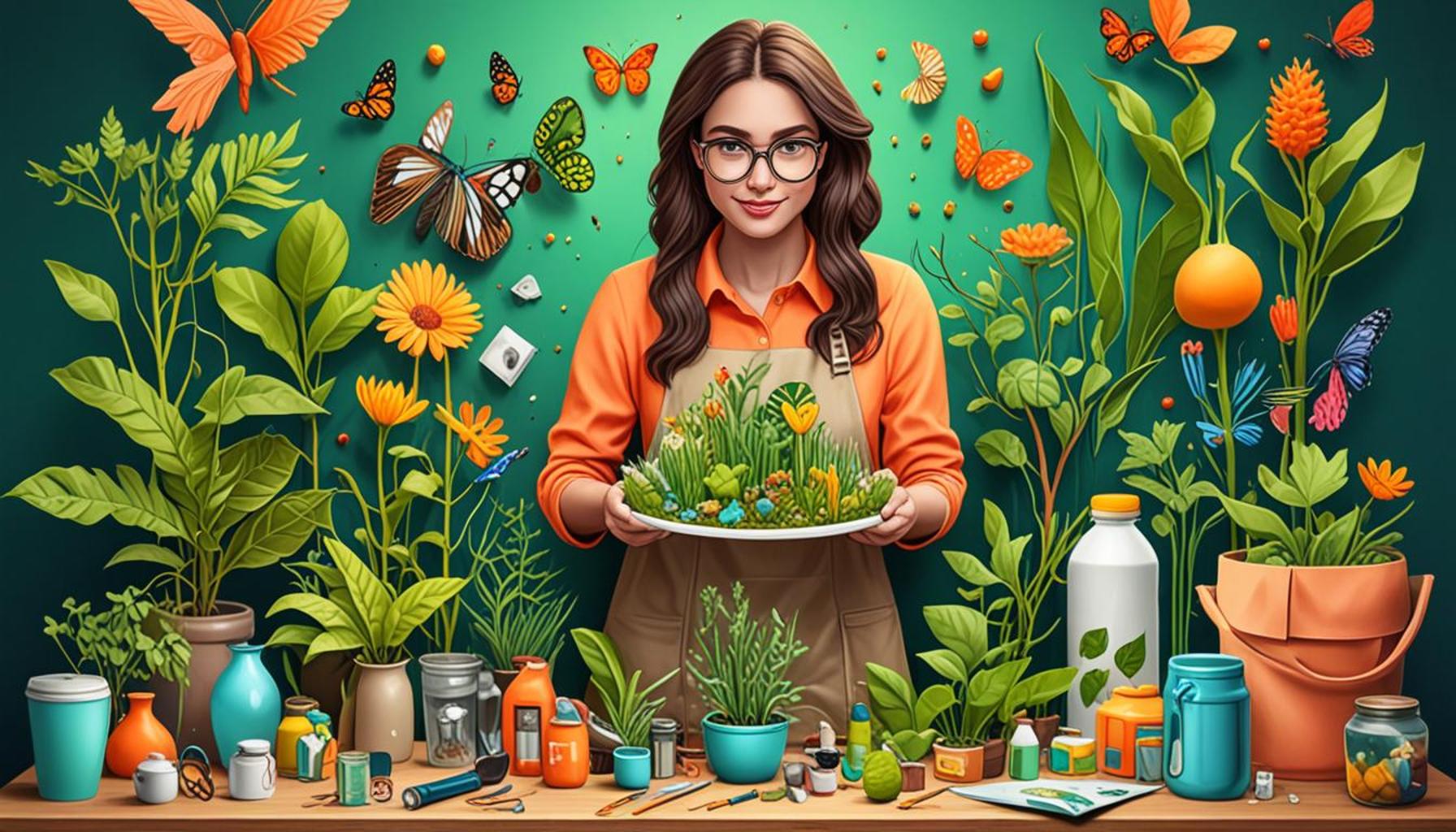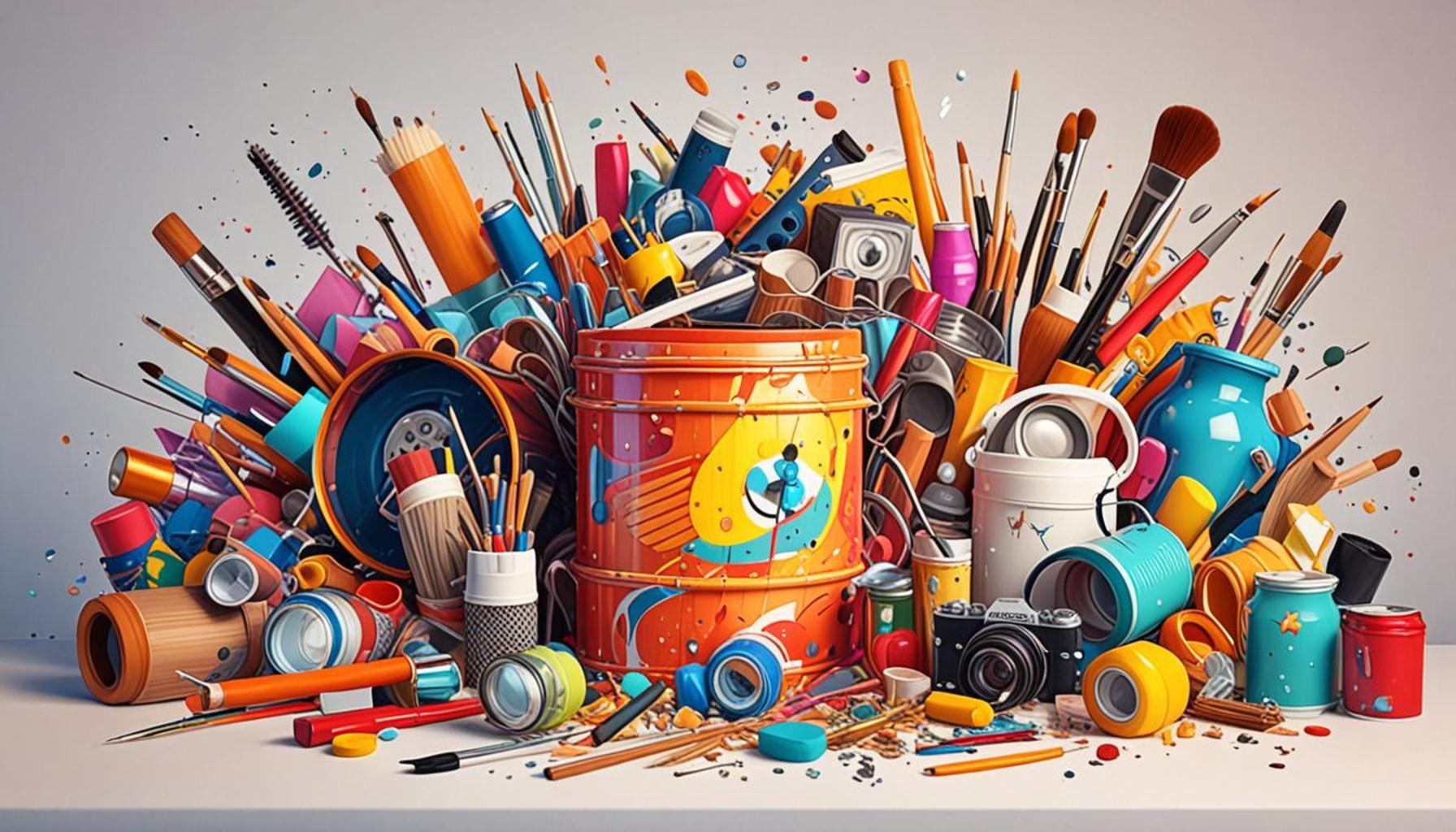Sustainable Collecting: How to Curate Your Collection with Eco-Friendly Practices

Understanding Sustainable Collecting
As environmental awareness continues to rise, individuals are reexamining their consumption habits, including the way they collect items. Sustainable collecting stands at the intersection of passion and responsibility. It encourages us to pursue collections that not only bring joy and enrichment to our lives but also contribute positively to our surroundings. This mindset fosters a conscious approach to acquiring items, ensuring they respect the planet rather than exploit it.
Adopting sustainable practices in collecting is not just a trend; it has become a necessity in our quest for a more eco-friendly lifestyle. Here are some effective strategies for collectors looking to align their hobbies with sustainability:
- Source Locally: One of the simplest ways to reduce your carbon footprint is by supporting local artisans and makers. By purchasing items that are crafted nearby, you help minimize the environmental impact associated with transportation. For example, local pottery or handcrafted furniture not only showcases unique craftsmanship but also allows collectors to form a connection with their community.
- Choose Vintage: Opting for second-hand or antique goods is another excellent strategy. Vintage items often come with rich histories and character, requiring no new resources to create. Thrifting or exploring antique shops can reveal hidden gems that add depth to your collection. Consider the growing popularity of vintage clothing or retro home decor that showcases sustainable choices while reflecting personal style.
- Research Materials: Investigating the sustainability of materials used in collectibles is crucial. For instance, collectors interested in art should inquire about the sources of paper and inks or the environmental impact of the production processes involved. Choosing items made from recycled materials or sustainably sourced timber can significantly lower your collection’s overall ecological footprint.
Engaging in sustainable collecting not only helps preserve the environment but also leads to discovering unique and meaningful treasures. Collectors have the opportunity to share their experiences and knowledge, thus inspiring others to make eco-conscious choices.
As you immerse yourself in sustainable collecting, the options are nearly limitless. Attend local craft fairs, participate in community swaps, or join groups focused on sustainable practices. Educating yourself about eco-friendly materials and production processes will empower you to make informed decisions. Embracing this journey allows you to cultivate a collection that reflects your values while contributing to a broader movement towards environmental stewardship.
Ultimately, sustainable collecting is more than a hobby; it is a profound declaration of our commitment to the planet and future generations. By incorporating these strategies, collectors can not only elevate their collections but also play an active role in fostering a greener world.
DISCOVER MORE: Click here to learn about outdoor drawing and painting techniques
Embracing Eco-Friendly Methods in Your Collection
In a world increasingly concerned about the environment, collectors possess a unique opportunity to influence consumer habits and promote sustainability. The practice of sustainable collecting not only enhances the personal value of your collection, but it also resonates with a broader movement aimed at reducing waste and fostering better environmental practices. By adopting eco-friendly methods, you not only reduce your carbon footprint, but you also inspire those around you to consider the impact of their acquisitions.
To fully embrace sustainable collecting, it’s essential to delve into effective practices that enhance the ecological integrity of your collection. Here, we explore some vital aspects that can guide collectors toward more mindful selections:
- Prioritize Quality over Quantity: One of the most powerful shifts a collector can make is to focus on acquiring fewer, high-quality items rather than accumulating numerous low-quality ones. This perspective not only minimizes waste but also fosters a deeper appreciation for each piece. By investing in sustainability-focused brands or products, you guarantee that your acquisitions are both durable and ethical, creating a lasting impact.
- Upcycling and Renovating: Instead of discarding items that no longer serve their purpose, consider their potential for upcycling or renovation. Transforming an old piece of furniture or reimagining worn clothing into new styles not only prevents unnecessary waste but also allows collectors to craft unique narratives behind their acquisitions. The growing trend of upcycling showcases how creativity can align with sustainability seamlessly.
- Education and Community Engagement: Expanding your knowledge of eco-friendly practices can enrich your collecting experience. Seek out resources that educate you on sustainable materials, ethical production methods, and responsible sourcing. Engage with local groups or online communities that share your values, as they can provide invaluable insights and connect you with like-minded collectors who offer support and inspiration.
Furthermore, it is beneficial to see collecting not merely as a private endeavor but as a platform for advocacy. One effective way to do this is by sharing your sustainable journey with others. By posting about your eco-friendly practices on social media or participating in workshops and talks, you can inspire others to rethink their collecting habits and join you in making greener choices. This collective effort has the potential to create a ripple effect that extends beyond individual pursuits and into the fabric of society, promoting a culture that values sustainability.
By integrating these principles of sustainable collecting into your practice, you create a curated collection that transcends mere accumulation and fosters a connection with the environment and the community. The joy of collecting evolves when each item becomes part of a larger story—one that reflects commitment to the planet and respect for craftsmanship, history, and cultural significance. The next step in your collecting journey is not only about what you gather but how it contributes to a sustainable future.
| Eco-Friendly Practices | Key Benefits |
|---|---|
| Utilizing Repurposed Materials | Reduces waste and minimizes the carbon footprint |
| Supporting Local Artisans | Promotes community sustainability and economy while ensuring quality craftsmanship |
| Implementing Digital Collecting | Minimizes physical resource usage and provides access to broader global exchanges |
| Using Eco-Conscious Packaging | Enhances the sustainability of shipping and reduces environmental impact |
Curating a collection with eco-friendly practices not only benefits the environment but also stimulates interest in sustainable collecting. By utilizing repurposed materials, collectors can creatively contribute towards waste reduction and carbon footprint minimization. Supporting local artisans further enhances the community’s economic sustainability while ensuring that items are crafted with care and quality.Another innovative approach is implementing digital collecting, which greatly minimizes physical resource usage, granting access to wider global exchanges. As more collectors adopt this practice, the emphasis on sustainable, environmentally-friendly ways to curate and share collections continues to grow.Moreover, using eco-conscious packaging can significantly enhance the sustainability of shipping methods, thereby reducing overall environmental impact. Embracing these practices opens doors for collectors to explore new ways of curation while aligning with the principles of sustainability—all crucial elements in the pursuit of a more responsible collecting culture.
DISCOVER MORE: Click here to dive into the world of nature photography
Conscious Sourcing: Where and How to Acquire Items
As you navigate the world of sustainable collecting, the source of your items plays a crucial role in determining their ecological impact. Embracing conscious sourcing means making informed decisions about the origin and production processes behind your acquisitions. Here are some approaches that not only guide ethical consumption but also fortify the sustainability of your collection:
- Support Local Artisans: Purchasing from local artisans or makers is one of the most effective ways to reduce your environmental impact. Not only does this support local economies, but it also diminishes the carbon footprint associated with transportation. Many artisans prioritize sustainable materials and practices in their work, making your purchases a direct investment in eco-friendly initiatives. Explore local craft fairs or markets, where unique pieces that reflect community and culture can often be found.
- Thrift and Vintage Stores: Sourcing items from thrift shops and vintage stores is an excellent way to embrace the second-hand economy. This practice not only extends the life of existing products but also prevents waste and reduces the demand for new manufacturing. Retailers like Goodwill and Habitat for Humanity ReStores provide not just affordable options but also give collections a sense of character and history, as many of these pieces come with compelling stories of their own. Moreover, many vintage shops curate their collections with a focus on unique, often timeless, designs that align well with sustainable goals.
- Online Marketplaces for Sustainable Goods: The digital age has birthed a plethora of platforms dedicated to sustainable shopping. Websites like Etsy and The RealReal not only connect you with eco-conscious vendors but also allow you to explore a myriad of options that can enrich your collection. Filter your searches for environmentally friendly products, and you’ll find a wealth of items that highlight sustainability while catering to diverse tastes.
Understanding Transparency in Production
The transparency of a product’s journey from production to procurement is an equally vital aspect of sustainable collecting. Understanding how items are made, the materials used, and the ethical standards upheld can vastly influence your purchasing choices. Many brands today are committed to shedding light on their supply chains and are utilizing innovative certifications to signal their sustainability efforts. For example, look for certifications from organizations like Fair Trade, Global Organic Textile Standard (GOTS), and Forest Stewardship Council (FSC). These endorsements provide a reliable framework for discerning eco-friendly practices.
Moreover, communicating with sellers about their production processes can also yield rich insights. A simple inquiry can open dialogues about the sustainability measures they implement, whether it’s through responsible sourcing, eco-friendly materials, or fair labor practices. This knowledge not only informs your choices but may also encourage sellers to prioritize sustainable options if consumers actively express interest.
Lastly, consider documenting the story of each piece in your collection. As you learn about its origins and the ethical implications of its production, share that information with fellow collectors. This narrative adds depth and meaning to your collection while reinforcing the idea that sustainable collecting is more than just a hobby—it’s a commitment to a better future for our planet.
DISCOVER: Click here to learn how creative hobbies unite communities
Final Thoughts on Sustainable Collecting
In the journey of sustainable collecting, it becomes increasingly clear that our choices extend beyond mere aesthetic appreciation; they reflect our commitment to the planet and its resources. By prioritizing conscious sourcing and seeking transparency in production, collectors can curate collections that are not only rich in character but also rooted in ethics. Supporting local artisans, embracing second-hand treasures, and exploring reputable online marketplaces will create a ripple effect, encouraging a more sustainable economy.
Furthermore, fostering connections with the stories behind each piece introduces an educational element that can inspire friends and fellow collectors. This holistic approach deepens our engagement with the items we cherish while promoting a culture of sustainability. It is essential for collectors to recognize their power in influencing the demand for ethically produced goods and to share this passion in their communities. Every choice we make contributes to the larger narrative of environmental stewardship.
As you embark on or continue your sustainable collecting journey, remember that every item tells a story; each piece holds the potential for positively impacting both culture and environment. By applying eco-friendly practices, we can curate collections that celebrate our planet, ensuring that future generations can enjoy a vibrant tapestry of history, art, and culture as well. Let every collection be a testament to the values we hold dear and a blueprint for a greener future.


